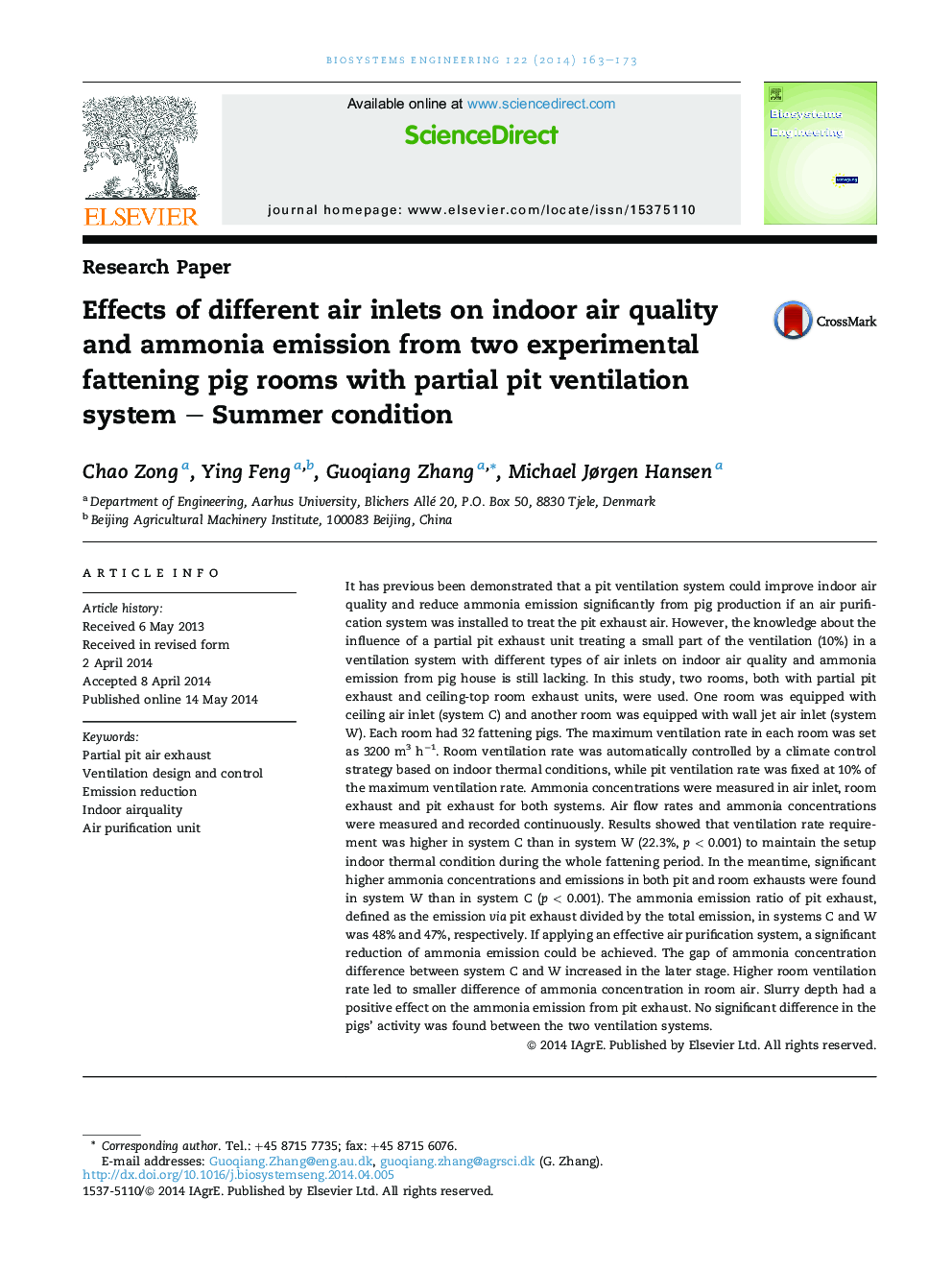| کد مقاله | کد نشریه | سال انتشار | مقاله انگلیسی | نسخه تمام متن |
|---|---|---|---|---|
| 8055198 | 1519539 | 2014 | 11 صفحه PDF | دانلود رایگان |
عنوان انگلیسی مقاله ISI
Effects of different air inlets on indoor air quality and ammonia emission from two experimental fattening pig rooms with partial pit ventilation system - Summer condition
ترجمه فارسی عنوان
تأثیر ورودی هوا متفاوت بر کیفیت هوای داخل و انتشار آمونیاک از دو اتاق خوکچه خوار با سیستم تهویه بخیه بخشی - شرایط تابستان
دانلود مقاله + سفارش ترجمه
دانلود مقاله ISI انگلیسی
رایگان برای ایرانیان
کلمات کلیدی
اگزوز هوای بخار جزئی طراحی و کنترل تهویه، کاهش انتشار، کیفیت آب در محیط داخلی واحد تصفیه هوا،
موضوعات مرتبط
مهندسی و علوم پایه
سایر رشته های مهندسی
کنترل و سیستم های مهندسی
چکیده انگلیسی
It has previous been demonstrated that a pit ventilation system could improve indoor air quality and reduce ammonia emission significantly from pig production if an air purification system was installed to treat the pit exhaust air. However, the knowledge about the influence of a partial pit exhaust unit treating a small part of the ventilation (10%) in a ventilation system with different types of air inlets on indoor air quality and ammonia emission from pig house is still lacking. In this study, two rooms, both with partial pit exhaust and ceiling-top room exhaust units, were used. One room was equipped with ceiling air inlet (system C) and another room was equipped with wall jet air inlet (system W). Each room had 32 fattening pigs. The maximum ventilation rate in each room was set as 3200 m3 hâ1. Room ventilation rate was automatically controlled by a climate control strategy based on indoor thermal conditions, while pit ventilation rate was fixed at 10% of the maximum ventilation rate. Ammonia concentrations were measured in air inlet, room exhaust and pit exhaust for both systems. Air flow rates and ammonia concentrations were measured and recorded continuously. Results showed that ventilation rate requirement was higher in system C than in system W (22.3%, p < 0.001) to maintain the setup indoor thermal condition during the whole fattening period. In the meantime, significant higher ammonia concentrations and emissions in both pit and room exhausts were found in system W than in system C (p < 0.001). The ammonia emission ratio of pit exhaust, defined as the emission via pit exhaust divided by the total emission, in systems C and W was 48% and 47%, respectively. If applying an effective air purification system, a significant reduction of ammonia emission could be achieved. The gap of ammonia concentration difference between system C and W increased in the later stage. Higher room ventilation rate led to smaller difference of ammonia concentration in room air. Slurry depth had a positive effect on the ammonia emission from pit exhaust. No significant difference in the pigs' activity was found between the two ventilation systems.
ناشر
Database: Elsevier - ScienceDirect (ساینس دایرکت)
Journal: Biosystems Engineering - Volume 122, June 2014, Pages 163-173
Journal: Biosystems Engineering - Volume 122, June 2014, Pages 163-173
نویسندگان
Chao Zong, Ying Feng, Guoqiang Zhang, Michael Jørgen Hansen,
